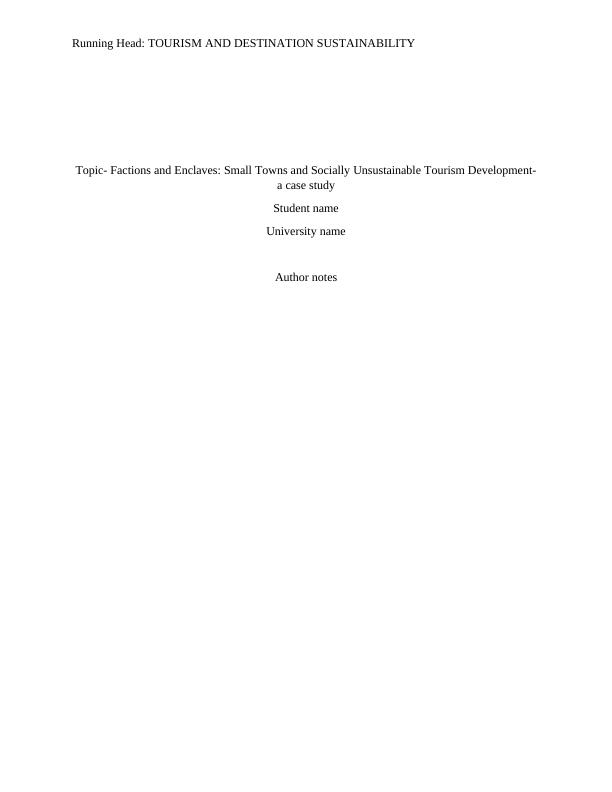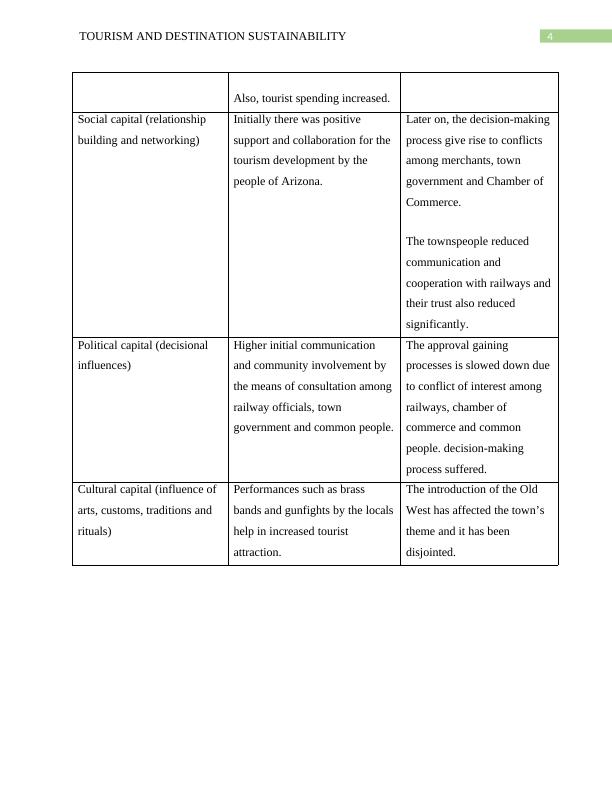Tourism and Destination Sustainability
Review the available literature on how tourism contributes to destination community wellbeing, analyze a specific case study, and identify the positive and negative impacts of the tourism activity.
13 Pages4292 Words40 Views
Added on 2023-01-20
About This Document
This document discusses the impacts of tourism on society and development in small towns, focusing on a case study of Williams, Arizona. It explores the negative social impacts and conflicts arising from tourism development, and analyzes the factors and processes contributing to these impacts. The document emphasizes the importance of social sustainability in tourism development.
Tourism and Destination Sustainability
Review the available literature on how tourism contributes to destination community wellbeing, analyze a specific case study, and identify the positive and negative impacts of the tourism activity.
Added on 2023-01-20
ShareRelated Documents
End of preview
Want to access all the pages? Upload your documents or become a member.
Planning of Tourism Developments in Singapore - Case Study
|15
|3831
|74
BX3194 Destination Management and Planning
|11
|3468
|94
Sustainable Tourism Development: Stakeholders, Planning, and Conflict Resolution
|13
|4180
|25
Tourism Destination
|13
|472
|41
Ethical Tourism in New Zealand: A Sustainable Approach
|1
|323
|170
International Tourism System (DOCS)
|15
|3387
|86




